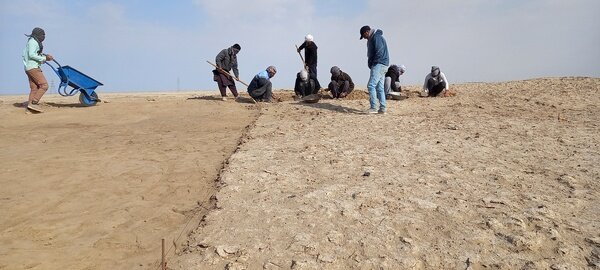Arrays of prehistorical relics unearthed in southeast Iran

“The excavated relics include pottery, azure stone beads, stone vessels, and bronze tools, which suggests the existence of a workshop for making tools and stone objects in this area,” ILNA quoted the Iranian archaeologist Hossein Moradi as saying on Wednesday.
“We carved specific trenches in different parts of the hill that resulted in the discovery of three cultural layers with architectural structures.”
The trenches were carved to help safeguard the hill which was damaged as the result of a gas pipeline project between Dashtak and Zabol in Sistan-Baluchestan province, Moradi said.
“Situated some 60 km south of Shahr-e Sukhteh (the Burnt City), the hill was severely damaged by the gas pipeline operation, and its northern parts were tunneled by heavy machinery.”
Shahr-e Sukhteh was populated during four main periods up to 1800 BC. Previous rounds of excavations showed that its residents had great skills in weaving, creating fine arts such as decorative objects, stone carving, and pottery painting.
“However, the rescue effort was carried out to maximize access to the archaeological information of the hill,” he said.
In addition to clay remains, copper ores, as well as round and hollow clay tokens, were found during the safeguarding project, he stated.
The collective province -- Sistan in the north and Baluchestan in the south -- accounts for one of the driest regions of Iran with a slight increase in rainfall from east to west, and an obvious rise in humidity in the coastal regions. In ancient times, the region was a crossword of the Indus Valley and the Babylonian civilizations.
Sistan-Baluchestan possesses special significance because of being located in a strategic transit location, especially Chabahar which is the only ocean port in Iran and the best and easiest access route of the middle Asian countries to free waters.
The vast province is home to several distinctive archaeological sites and natural attractions, including the World Heritage sites of Shahr-e Sukhteh and Lut desert.
Shahr-e Sukhteh is associated with four rounds of civilization, all burnt down by catastrophic sets of fire. The site is situated in Sistan-Baluchestan province, which was once a junction of Bronze-Age trade routes crossing the Iranian plateau.
AFM
Leave a Comment